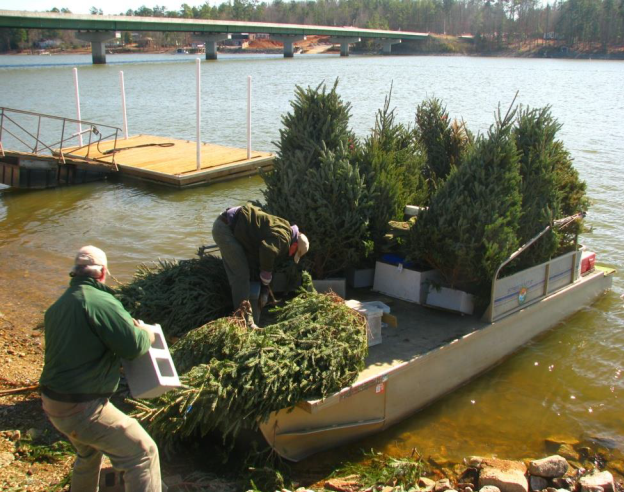As the holiday season winds down, many households face the dilemma of what to do with their once-festive Christmas trees. While some opt for recycling programs, an increasingly popular and eco-friendly alternative is upcycling. Upcycling involves the repurposing of Christmas trees for a range of restoration projects, providing a creative and impactful contribution to sustainable waste management and the overall well-being of the environment.

The Environmental Impact of Christmas Trees
Every year, millions of Christmas trees are harvested for holiday celebrations around the world. It is estimated that 800,000 Christmas trees were sold in Canada alone in 2020. While these trees bring joy and festive spirit, their disposal can contribute to environmental challenges. Many Christmas trees end up in landfills, emitting harmful greenhouse gases as they decompose. However, upcycling presents a sustainable waste management solution to extend the life of these trees and mitigate their environmental impact.

The Upcycling Process
1) Mulching for Soil Enrichment
One common upcycling method is mulching. Christmas trees can be chipped into small pieces, creating organic mulch that benefits soil health. This mulch helps retain moisture, suppress weeds, and enhance nutrient levels in gardens and landscapes. As the mulch decomposes, it releases valuable organic matter into the soil, promoting overall ecosystem health. However, many Christmas tree growers also apply chemical herbicides or insecticides, so consider using wood mulch for landscaping or walking paths, rather than in your garden.

2) Erosion Control
In restoration projects, discarded Christmas trees find purpose in preventing soil erosion. By strategically placing trees along shorelines or in areas prone to erosion, they create natural barriers that trap sediment and protect against the damaging effects of wind and water. Setting up the Christmas trees along a shoreline also helps erosion by redirecting flow and creating better pathways for water to travel. This method is particularly effective in coastal restoration projects. A great example of the Christmas Trees in action can be found in Joe Sams Leisure Park located in the community of Waterdown, Ontario.
Image by Conservation Halton via The Weather Network.

3) Wildlife Habitat Creation
Upcycled Christmas trees can be used to create habitats for wildlife. When strategically placed in natural areas, these trees provide shelter and refuge for birds and small animals. As the trees decompose, they also contribute to the nutrient cycle of the ecosystem, supporting the biodiversity of the region.
Image by Times-Picayune | New Orleans Advocate file via Nola.

4) Reef Building in Aquatic Ecosystems
In aquatic environments, sunken Christmas trees can serve as the building blocks for artificial reefs. These structures provide habitats for marine life, including fish and invertebrates. Fish can fit within the voids of the tree structure – providing them with protection. Fish can start congregating in and around the trees within a day or two of the trees being added to the habitat. Over time, coral and other organisms attach themselves to the trees, creating a thriving ecosystem that benefits both the environment and local fisheries.
Image by SCDN file via Post and Courier.

5) Wood Recycling for Construction
For larger Christmas trees or those with sturdy branches, the wood can be repurposed for construction projects. From crafting benches and tables to creating wooden pathways in parks, the possibilities are vast. This approach not only reduces the demand for new timber but also adds a touch of sustainability to various construction endeavors.

Conclusion
Upcycling Christmas trees for restoration projects offers a meaningful way to contribute to environmental conservation as we bid farewell to the holiday season. Beyond their initial role in bringing joy and warmth to homes, these trees can continue to serve a purpose in supporting ecosystems, preventing erosion, and creating habitats for wildlife. By embracing the art of upcycling, we can turn a traditional holiday tradition into a powerful force for positive environmental change.




